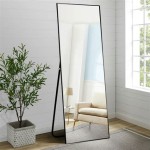How Do I Mirror My iPhone to Computer Using Bluetooth?
Mirroring an iPhone screen to a computer allows users to view and sometimes interact with their iPhone content on a larger display. While various technologies facilitate screen mirroring, Bluetooth alone is not typically sufficient for full screen mirroring. This article explains why Bluetooth isn't suitable for this purpose and explores alternative methods for mirroring an iPhone to a computer.
Bluetooth is a wireless technology designed for short-range data exchange between devices. Its primary function is to connect peripherals like keyboards, mice, and headphones to computers and smartphones. Bluetooth is also used for file sharing and audio streaming. While convenient for these tasks, its bandwidth limitations make it unsuitable for transmitting the large amounts of data required for real-time video and audio streaming, which are essential components of screen mirroring.
Screen mirroring necessitates the continuous transmission of the device's display content, including changes in visuals and audio. This requires a significant amount of bandwidth. Bluetooth's data transfer rate is significantly lower than other wireless technologies like Wi-Fi, making it insufficient for the demands of screen mirroring. Attempting to mirror an iPhone screen over Bluetooth would result in significant lag, dropped frames, and poor audio quality, rendering the experience unusable.
Several effective methods exist for mirroring an iPhone to a computer, each leveraging technologies better suited for this task. These methods offer significantly improved performance and a smoother user experience compared to a hypothetical Bluetooth-based approach.
AirPlay is Apple's proprietary wireless streaming technology designed specifically for mirroring and streaming content between Apple devices and compatible smart TVs and other receivers. To mirror an iPhone to a Mac computer, AirPlay is the preferred method. Both devices must be connected to the same Wi-Fi network. Users can initiate mirroring through the Control Center on their iPhone by selecting "Screen Mirroring" and choosing their Mac from the list of available devices.
Certain third-party applications available on both macOS and Windows platforms enable wireless screen mirroring from an iPhone. These applications typically operate over the local Wi-Fi network, mirroring the iPhone's display to the computer screen. Functionality varies between applications; some may offer additional features like recording the mirrored screen or providing remote control capabilities. Selecting a reputable application from a trusted source is crucial for security and performance.
For Windows users without AirPlay compatibility, a wired connection provides a reliable alternative. Connecting the iPhone to the Windows computer via a USB cable and utilizing iTunes (or the Finder on newer macOS versions for iPhone backup and management) allows screen content to be displayed, although this doesn't mirror the screen in real-time. This method is primarily suitable for viewing photos and videos stored on the iPhone.
While a wired connection offers stability, it lacks the flexibility of wireless mirroring. AirPlay and third-party applications offer a more dynamic experience, particularly for tasks like presentations or demonstrations where real-time interaction with the iPhone's display is essential.
Choosing the optimal mirroring method depends on the user's specific needs and available resources. AirPlay provides a seamless experience within the Apple ecosystem. Third-party applications offer cross-platform compatibility and extended features, while a wired connection guarantees stability for basic content viewing. Considering these factors will guide users towards the most suitable solution for their screen mirroring requirements.
Screen mirroring facilitates various activities, such as sharing presentations on a larger screen, playing mobile games with enhanced visibility, or demonstrating applications and features to an audience. The preferred method for accomplishing this with an iPhone involves leveraging Wi-Fi-based technologies like AirPlay or third-party applications. These methods provide the bandwidth and performance required for a smooth and responsive mirroring experience.
Understanding the limitations of Bluetooth in the context of screen mirroring is essential for selecting appropriate technologies for this task. While Bluetooth fulfills crucial roles in connecting peripherals and enabling short-range data exchange, its bandwidth limitations prevent effective screen mirroring. Utilizing technologies designed for high-bandwidth data transmission ensures a satisfactory user experience.
By understanding the technical constraints of Bluetooth and exploring alternative mirroring methods, users can effectively share their iPhone's content on a larger display, enhancing productivity and communication capabilities.

How To Mirror Iphone Windows Pc Laptop Mac Full Guide

How To Mirror Iphone Windows Pc Laptop Mac Full Guide

How To Mirror Iphone Pc Via Bluetooth Detailed Guide

How To Mirror Iphone Pc Via Bluetooth Detailed Guide

How To Mirror Iphone Windows Pc Laptop Mac Full Guide

How To Mirror Iphone Pc Via Bluetooth Detailed Guide

Is It Possible To Mirror Iphone Pc Without

How To Mirror Iphone Windows Pc Laptop Mac Full Guide

How To Mirror Iphone Pc Via Bluetooth Detailed Guide

How To Mirror Iphone Pc Via Bluetooth Detailed Guide








